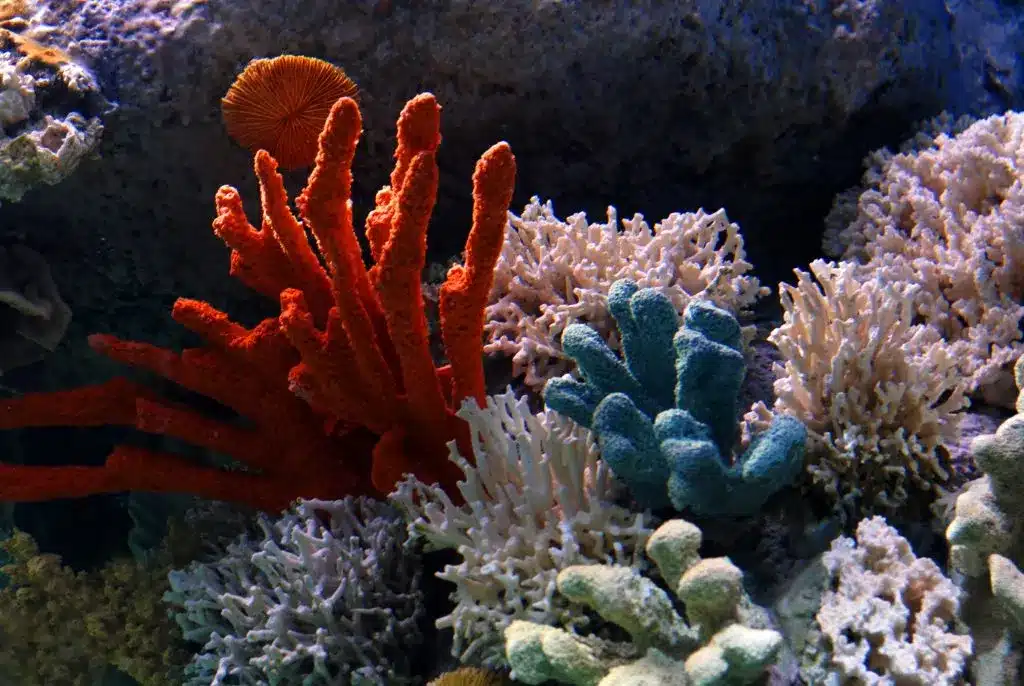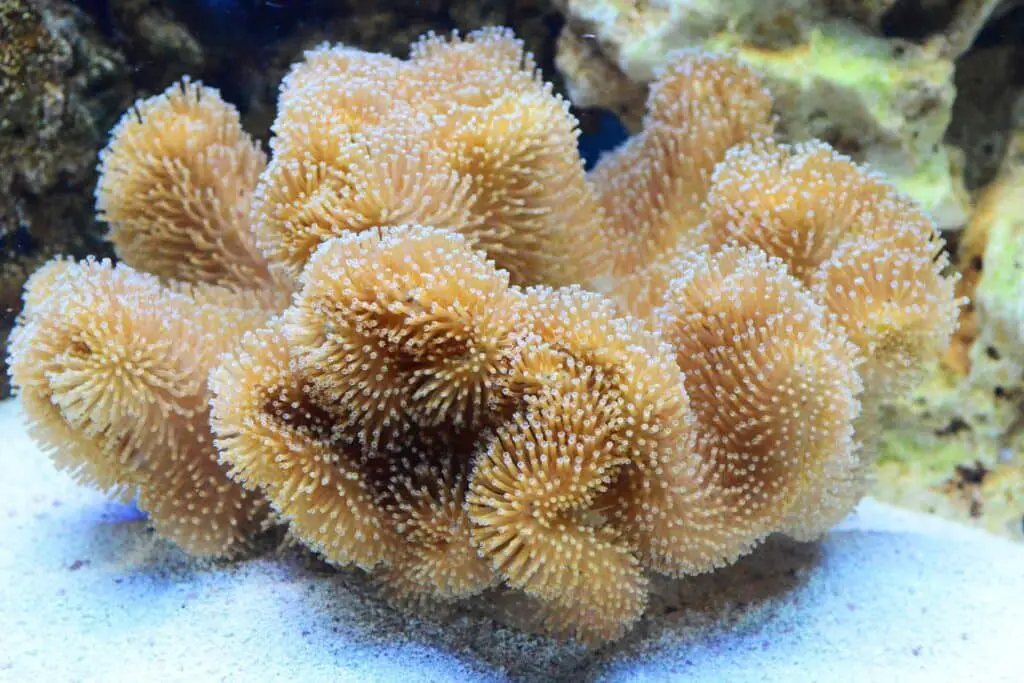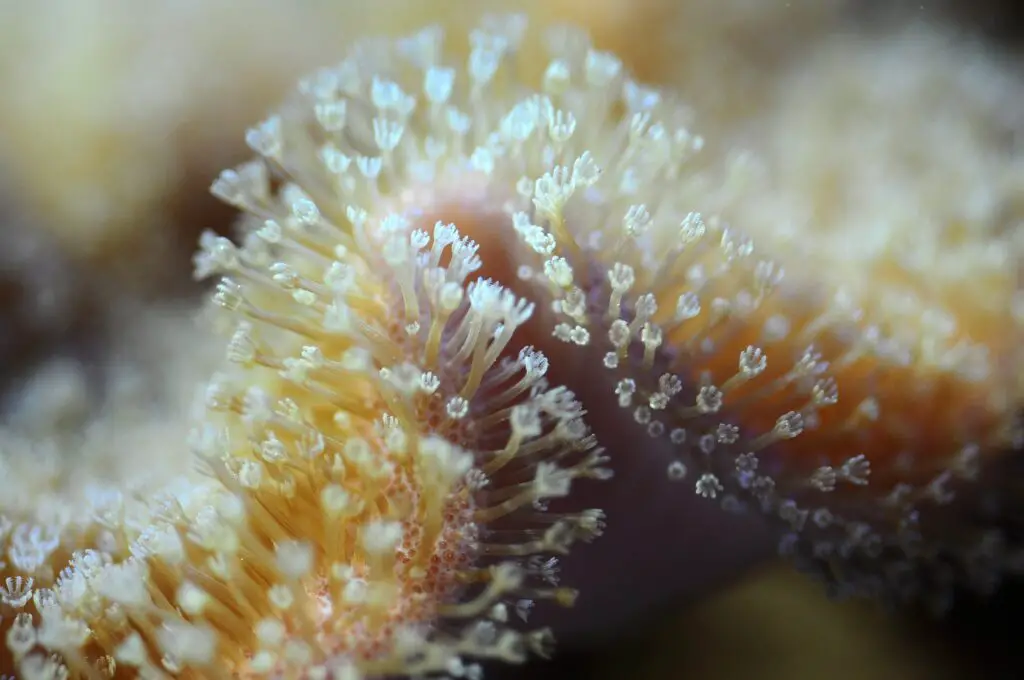How Do Corals Eat

Introduction
How Do Corals Eat: Coral reefs are some of the most vibrant and biodiverse ecosystems on our planet, teeming with an array of colourful marine life. At the heart of these underwater wonderlands lies a fascinating and essential process: coral feeding. While corals may appear to be static, rock-like structures, they are, in fact, dynamic organisms with unique feeding mechanisms that contribute significantly to the health and diversity of coral reef ecosystems.
Understanding how corals eat is not only a matter of scientific curiosity but also of critical importance for the conservation and management of these delicate environments. Corals are classified as cnidarians, a group of animals that includes sea anemones and jellyfish. They possess specialised cells called cnidocytes, which contain tiny harpoon-like structures called nematocysts. These nematocysts are used for both defence and feeding.
Corals are primarily carnivorous, and their diet mainly consists of small zooplankton and microscopic organisms. They employ a variety of feeding strategies, including passive suspension feeding, in which they capture plankton from the water column using their tentacles, and symbiotic relationships with photosynthetic algae known as zooxanthellae, which provide them with essential nutrients through photosynthesis.

Do corals produce their own food?
Corals are animals, though, because they do not make their own food, as plants do. Corals have tiny, tentacle-like arms that they use to capture their food from the water and sweep into their inscrutable mouths.
Corals do not produce their own food in the traditional sense, as plants do through photosynthesis. Instead, they rely on a combination of feeding strategies to obtain the nutrients they need for survival.
One of the most important aspects of coral nutrition involves a symbiotic relationship with microscopic algae called zooxanthellae. These single-celled algae live within the tissues of coral polyps and are capable of photosynthesis. Through this process, they convert sunlight into energy and produce sugars, which they share with the coral host.
However, corals are not entirely dependent on zooxanthellae for sustenance. They are also opportunistic carnivores. Using specialized stinging cells called cnidocytes located on their tentacles, corals can capture and immobilize tiny zooplankton and other small prey that drift into their vicinity. They then ingest these captured organisms, supplementing their energy and nutrient intake.
Corals have evolved a dual strategy for obtaining food: they receive a substantial portion of their energy from photosynthetic zooxanthellae, which provide sugars through photosynthesis, and they also engage in carnivorous feeding to supplement their diet.
Are coral reefs eaten?
Coral reefs are one of the most diverse and complex ecosystems on the planet, and they are home to a vast array of marine life. While coral reefs are not typically considered a food source for humans, some species of coral are edible and have been consumed by people for centuries.
Coral reefs themselves are not typically consumed as a primary food source by any single organism. Instead, coral reefs are complex ecosystems with numerous species that interact in various ways. While the living coral polyps are not a common source of food for most marine creatures due to their hard, calcium carbonate skeletons and defensive mechanisms, some animals do feed on certain components of the reef.
- Coral Predators: Some specialized organisms, such as certain species of coral-eating fish, like parrotfish and butterflyfish, graze on coral polyps. They have specialized mouthparts and digestive systems adapted to consume coral tissue.
- Coral Parasites: Some organisms, such as coral-eating snails (e.g., the Crown-of-Thorns starfish), can become problematic when their populations explode, as they feed on corals and can lead to coral reef degradation.
- Boring Organisms: Certain organisms, like boring sponges and mollusks, can weaken the reef structure by burrowing into the calcium carbonate skeleton of corals. This doesn’t “eat” the coral but can damage its integrity.
- Algae Overgrowth: While not eating the corals themselves, excessive algae growth can outcompete corals for space and sunlight, leading to a decline in coral health.
What foods do corals eat?
What Do Coral Eat? Coral polyps are carnivorous and feed on tiny floating animals called zooplankton. They also consume bacterioplankton and detritus, which are tiny particles of decaying organic matter. Some species of coral also feed on larger prey, such as small fish and invertebrates.
Corals, despite their stationary appearance, are remarkable organisms with specific feeding strategies that enable them to obtain the nutrients they need to thrive. While they don’t consume traditional foods like animals or plants, they have evolved various mechanisms for capturing and obtaining their sustenance.
- Zooxanthellae Symbiosis: The primary source of nutrition for many coral species comes from a symbiotic relationship with tiny, photosynthetic algae called zooxanthellae. These algae live within the coral tissues and use sunlight to perform photosynthesis.
- Carnivorous Feeding: Corals are also opportunistic carnivores. They have specialized stinging cells called cnidocytes on their tentacles. When small zooplankton or other tiny prey come into contact with these tentacles, the cnidocytes release harpoon-like structures that immobilize the prey.
- Passive Suspension Feeding: Some coral species engage in passive suspension feeding. They extend their tentacles into the water column, capturing and consuming small particles, such as plankton, that are carried by ocean currents.
Corals have a diverse diet that combines both autotrophic (zooxanthellae-derived) and heterotrophic (capturing prey) nutrition. This versatility allows them to adapt to varying environmental conditions and contributes to their resilience in nutrient-poor tropical waters.
Is coral alive or dead?
However, unlike rocks, corals are alive. And unlike plants, corals do not make their own food. Corals are in fact animals. The branch or mound that we often call “a coral” is actually made up of thousands of tiny animals called polyps.
Corals are indeed living organisms, although they can sometimes be mistaken for inanimate structures due to their appearance. A coral colony is made up of thousands to millions of individual polyps, which are the basic building blocks of the coral structure. Each polyp is a tiny, cylindrical, and typically translucent animal.
These polyps are very much alive. They have specialized tentacles armed with stinging cells called cnidocytes, which they use to capture and immobilize prey such as plankton. The polyps also have a mouth, digestive system, and the ability to secrete a calcium carbonate skeleton. They form intricate, interconnected structures that grow over time, creating the recognizable reef formations.
Moreover, corals engage in a vital symbiotic relationship with photosynthetic algae called zooxanthellae. These algae live within the coral tissues, providing corals with essential nutrients through photosynthesis. In return, the corals offer protection and access to sunlight. This partnership is crucial for the health and survival of coral reefs.
Corals are sensitive creatures that can face various threats. They are susceptible to stressors like rising sea temperatures, pollution, ocean acidification, and physical damage. When subjected to prolonged stress, corals may expel their symbiotic zooxanthellae, a phenomenon known as coral bleaching, which can lead to their decline or death.
Can humans touch coral?
Be careful not to touch, kick or stand on the corals you see in the water because this may damage or even kill them.
It is generally not recommended for humans to touch coral in natural reef environments. Corals are living organisms, and their delicate structures can be easily damaged by physical contact. Here are some important reasons why touching coral is discouraged:
- Damage to Coral: Corals have a calcium carbonate skeleton that is covered by a thin layer of living tissue. When touched or bumped, this tissue can be injured or torn, leaving the coral vulnerable to disease and predation. Additionally, the stress caused by physical contact can lead to coral bleaching, which can be deadly to the coral.
- Human Safety: Some corals have stinging cells (nematocysts) that can cause skin irritation or injury when touched. While these stings are generally not dangerous, they can be uncomfortable.
- Protection of the Ecosystem: Coral reefs are fragile ecosystems that provide habitat and sustenance to a diverse range of marine life. Damaging the coral not only harms the corals themselves but also disrupts the entire ecosystem.
- Legal Protections: In many places, it is illegal to touch or damage coral reefs. Authorities enforce these regulations to protect the reefs and the marine life they support.
If you are snorkeling or diving near coral reefs, it’s essential to practice responsible and sustainable tourism. Maintain a safe distance from the coral, avoid standing or resting on it, and be mindful of your buoyancy to prevent accidental contact. By respecting these guidelines, you can help preserve these vital ecosystems for future generations to enjoy.
How do corals capture their food?
Corals use specialized stinging cells called cnidocytes to capture tiny planktonic organisms that pass by in the water. These plankton get stuck on the coral’s tentacles, which are armed with nematocysts—stinging structures that immobilize and sometimes inject digestive enzymes into the prey.
Corals employ a fascinating array of mechanisms to capture their food, which mainly consists of small planktonic organisms and microscopic particles suspended in the water. While corals appear to be stationary, they are highly adapted for this feeding process:
- Tentacle Capture: Corals extend their tentacles into the water column, creating a graceful, swaying forest of appendages. These tentacles are lined with specialized cells called cnidocytes, which contain tiny, harpoon-like structures called nematocysts.
- Mucus Nets: Some coral species secrete sticky mucus to capture small particles and plankton. The mucus forms a net-like structure around the coral polyps, which traps passing organisms.
- Symbiotic Partnerships: Corals also benefit from a mutualistic relationship with photosynthetic algae called zooxanthellae. These algae live within the coral’s tissues and use sunlight to produce sugars through photosynthesis.
- Passive Suspension Feeding: In addition to active capture methods, corals can passively filter particles from the water. They create water currents by moving their cilia or by swaying their tentacles, allowing them to catch suspended particles and plankton as water flows over them.
However, it’s crucial to note that corals are highly sensitive to environmental stressors, and disturbances like coral bleaching can disrupt their feeding processes, putting these remarkable organisms and the ecosystems they support at risk.
Do all corals feed in the same way?
Corals are fascinating marine animals that belong to the phylum Cnidaria, and they can exhibit diverse feeding strategies. The two primary categories of corals are hard corals (scleractinians) and soft corals (octocorals), and each group has its own unique feeding methods.
Hard corals, which are the reef-building corals, have tiny stinging cells called nematocysts in their tentacles. They primarily feed on small planktonic organisms, such as zooplankton and phytoplankton, which they capture using their nematocysts. Hard corals also engage in a symbiotic relationship with photosynthetic algae called zooxanthellae, which provide them with energy through photosynthesis.
On the other hand, soft corals do not have hard calcium carbonate skeletons like hard corals. They use their feathery, tentacle-like structures to capture planktonic organisms and suspended particles from the water column. Soft corals rely less on photosynthesis and more on filter feeding to obtain their nutrients.
While both hard and soft corals are filter feeders, their specific feeding mechanisms and reliance on photosynthesis can vary significantly. These differences in feeding strategies contribute to the diversity of coral ecosystems and their ability to adapt to various environmental conditions.
What is the role of photosynthetic algae in coral nutrition?
Photosynthetic algae, known as zooxanthellae, play a crucial role in the nutrition and overall health of coral reefs. This symbiotic relationship between coral polyps and zooxanthellae is fundamental to the success of coral ecosystems.
Zooxanthellae reside within the tissues of coral polyps, primarily in the coral’s gastrodermal cells. They are photosynthetic organisms capable of harnessing sunlight to convert carbon dioxide and water into sugars through photosynthesis. These sugars serve as an energy source for both the coral and the algae themselves. In return, corals provide shelter and a stable environment for the zooxanthellae.
The photosynthetic activity of zooxanthellae is essential for corals because it provides them with a significant portion of their nutritional requirements. The sugars produced by the algae not only sustain the coral polyps but also support the calcification process, which is vital for the growth and maintenance of the coral’s calcium carbonate skeleton.
The vibrant colors of corals are a result of the pigments found in the zooxanthellae. This photosynthetic relationship not only nourishes the corals but also contributes to the stunning colors and beauty of coral reefs.
However, this symbiotic relationship is delicate and can be disrupted by stressors such as rising sea temperatures and pollution, leading to coral bleaching. When stressed, corals expel their zooxanthellae, causing them to lose their color and ultimately compromising their health.

Conclusion
The distribution of eyespots on a starfish’s arms is a testament to the incredible adaptability of marine life. While these photoreceptor organs may seem rudimentary compared to the eyes of more advanced animals, they are perfectly suited to the starfish’s needs.
The decentralised arrangement of eyespots allows starfish to have a broad awareness of their surroundings. This simple visual system helps them detect changes in light, which is essential for their survival in the underwater world. Whether it’s identifying potential threats or locating sources of food, these eyespots are instrumental in guiding the starfish’s movements.
The presence of eyespots on each arm underscores the starfish’s impressive regenerative abilities. Even if an arm is severed, the eyespot-containing portion can continue to function independently. This not only aids in their survival but also serves as a remarkable example of nature’s resilience.
In the grand tapestry of marine life, the starfish’s eyespots may be modest, but they are a testament to the beauty of evolution and adaptation. They remind us that even the simplest of organs can be perfectly suited to an organism’s specific needs, and in the case of the starfish, these eyespots are vital tools for navigating the complex and ever-changing underwater world.



